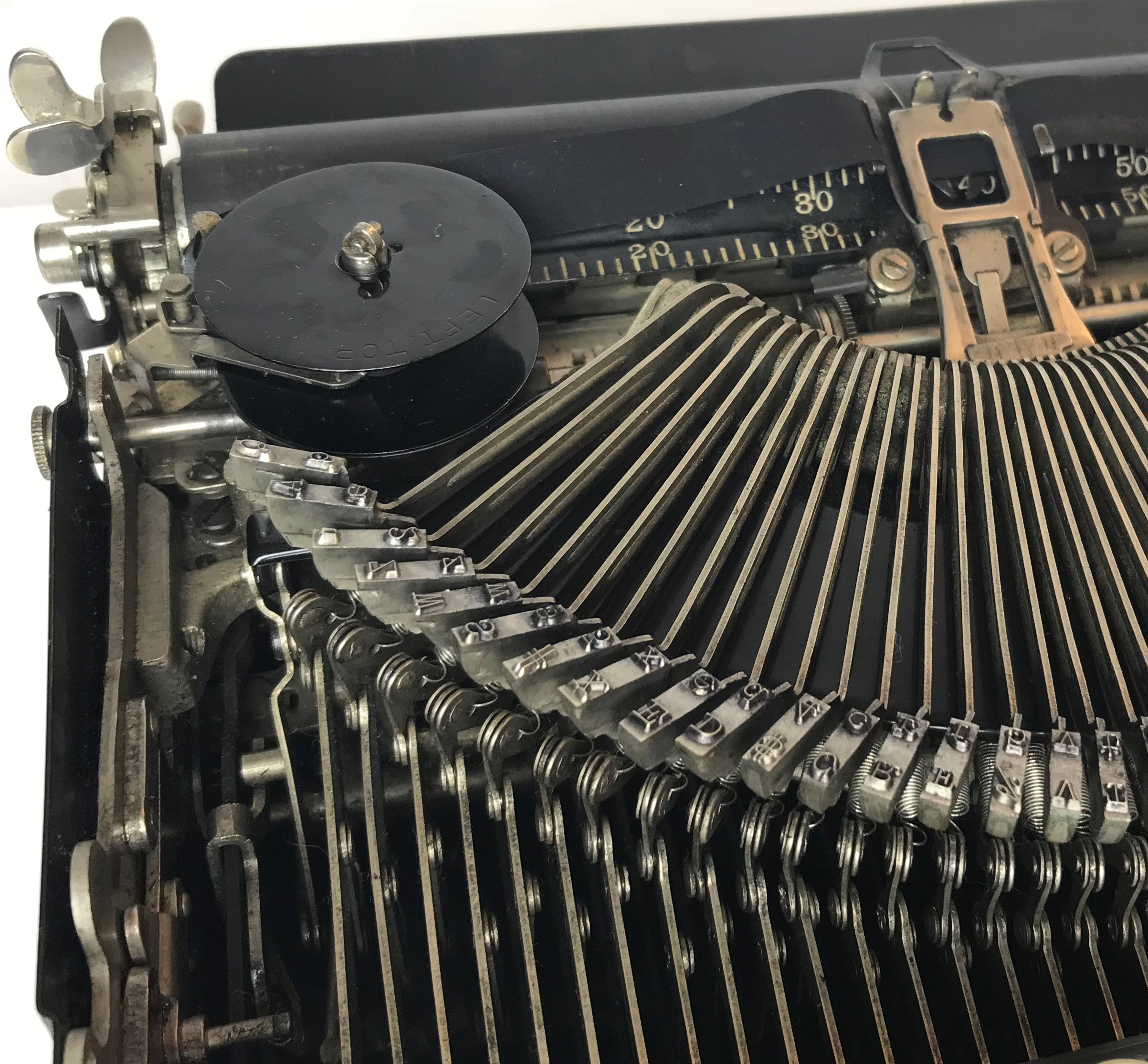1913 Hammond Multiplex

See more photos of the
1913 Hammond MultiplexType Shuttles, a New Way to Make an Impression
The 1913 Hammond Multiplex uses a 3-row, Qwerty, 30-key, back-of-paper-strike impact mechanism.
This remarkable machine is considered one of the most successful typewriter designs ever developed. In fact, the basic design of the machines, with a range of incremental enhancements. was used from its introduction in the early 1880s almost until 1980.
The quality of its typing was superior to virtually all other typewriters of its time because of the clever mechanics that produced a consistent impression it made on paper. Typing a key triggered a hammer (or anvil) to strike a soft rubber impression strip onto the back of the paper, thereby pressing the paper against the ribbon and onto the selected character on the type-shuttle.
It all sounds very complicated but it worked wonderfully well, producing crisp, clean and uniformly printed characters superior to virtually all other manual typewriters. A big disadvantage of the design is that the typed characters are only semi visible since it was hard for the typist to look around the type shuttle to see what had been typed.
A further functional problem is that the paper must first be rolled up into a cylinder and slid into a cage where it was then fed through two rollers to position the paper for typing.
The impression strip, roughly an inch-wide, thick rubber band, was stretched across the carriage from one side to the other between the hammer and paper and secured by two screws on each end. Its function was to soften and evenly distribute the blow of the hammer to produce a clear, clean image of the character typed on the paper. (Note: The impression strip is missing on this and most other old Hammonds since, as rubber bands do, it naturally disintegrated over the years.) Functional reproductions of new impression strips are often available on the internet.)
Typing on a Hammond typewriter feels like typing on a 1960s IBM Selectric typewriter, since any amount of pressure on a key simply triggers the predetermined typing force independent of the widely-varying levels of typing pressure exerted by different typists. The energy to provide the typing force is generated by moving the carriage return back to the right, which winds the spring driving the hammer.
An ingenious circular wheel in front of the platen guides two sliding semicircular vulcanite type shuttles upon which three rows of characters are molded. The circular shuttle guide slides back-and-forth, up and down, positioning the correct letters as the machine’s keys are pressed. The circular shuttle guide actually holds two (2) type shuttles which can be rotated by the typist to make more characters conveniently available for typing.
The type shuttles are unique to Hammond typewriters and sought after by collectors. The shuttles were available in hundreds of different type faces and a wide variety of languages – a technology far pre-dating the similar rotating technology of the IBM Selectric typewriter introduced in 1961.
This machine includes its original metal case, though it is in rough shape.
_______________
Overall condition: Fair
Year: 1913
Serial No.: 236637G2
Type language: English
Manufactured by the Hammond Typewriter Company, New York, New York, USA.


